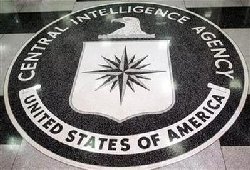The first detailed picture of how so-called high value detainees spent their days inside secret Central Intelligence Agency-run prisons overseas has emerged in dozens of previously classified documents released this week. And the picture is chilling.
A detainee could be forced to stand, almost naked, handcuffed, going days without sleep, and if that failed to break his will, there were other methods for interrogators at secret prisons to try.
The "black sites" were run with the singular goal of extracting potentially valuable information from some of the most high-profile 'terror' suspects in US custody, and there was a clear theory about how that should be done.
"The effectiveness of the program depends on persuading the detainee, early in the application of these techniques, that he's dependent on the interrogators and that he lacks control over his situation," wrote Steven Bradbury, then a senior attorney at the Office of Legal Counsel, an office that gives the president legal advice.
The 2007 memorandum is part of a record that describes the creation of a program put in place by former president George W. Bush's administration in the wake of the September 11, 2001 attacks.
It included the formulation of so-called enhanced interrogation techniques, which could be applied with increasing severity the longer detainees refused to provide information.
Interrogators, some from private security firms, others agents from the CIA itself, had authorization to slap detainees across the face, force them into uncomfortable stress positions, and keep them awake for 11 consecutive days.
If that did not work, they could strap a collar and leash around a detainee's neck, using the leash to repeatedly slam the suspect into a wall.
They could force a suspect into a dark box and leave him there for 18 hours, and if the pressure needed to be increased, insects could be placed inside.
If all else had failed, there was waterboarding: interrogators could strap a detainee to a bench with his feet higher than his head, place a cloth firmly over his mouth and nose, and pour water onto his face.
"Airflow is restricted for 20 to 40 seconds and the technique produces the sense of drowning and suffocation," a 2004 CIA inspector general report said of the process.
Once the suspect had been allowed to take "three or four full breaths," the waterboarding could resume, for up to 20 minutes, according to the report, which was released on Monday.
But even with permission to use these techniques, interrogators deviated from their regulations, the report found.
There were violations of the rules on the application of waterboarding, which was used on at least three Al-Qaeda suspects, including Khalid Sheikh Mohammed.
Instead of using small amounts of water, interrogators poured copious amounts onto detainees such as Mohammed, who was waterboarded 183 times.
Between September 2001 and October 2003, the report said interrogators threatened detainees with mock executions, an electric drill and an unloaded handgun.
They threatened to kill Khalid Sheikh Mohammed's children, implied they would rape another detainee's mother, scrubbed one detainee with a stiff brush until his skin was raw, and strangled another until he began to pass out.
Interrogators worried about some of the techniques, with one CIA officer telling the inspector general's investigation he feared being placed on a "wanted list," charged with war crimes before an international tribunal.
The 2004 report concluded that "there is no doubt that the program has been effective," though it noted that an assessment of the enhanced interrogation techniques would be "a more subjective process and not without some concern."
The prisons are now closed, ordered shut by President Barack Obama when he took office, and an investigation has been launched into the use of some of the techniques detailed in the report.
The inquiry will examine whether the use of unauthorized techniques by individual interrogators was illegal, but will not consider whether authorized techniques violated US or international law.
PHOTO CAPTION
The logo of the U.S. Central Intelligence Agency is shown in the lobby of the CIA headquarters in Langley, Virginia.
Source: AFP


 Home
Home Discover Islam
Discover Islam Quran Recitations
Quran Recitations Lectures
Lectures
 Fatwa
Fatwa Articles
Articles Fiqh
Fiqh E-Books
E-Books Boys & Girls
Boys & Girls  Women
Women










